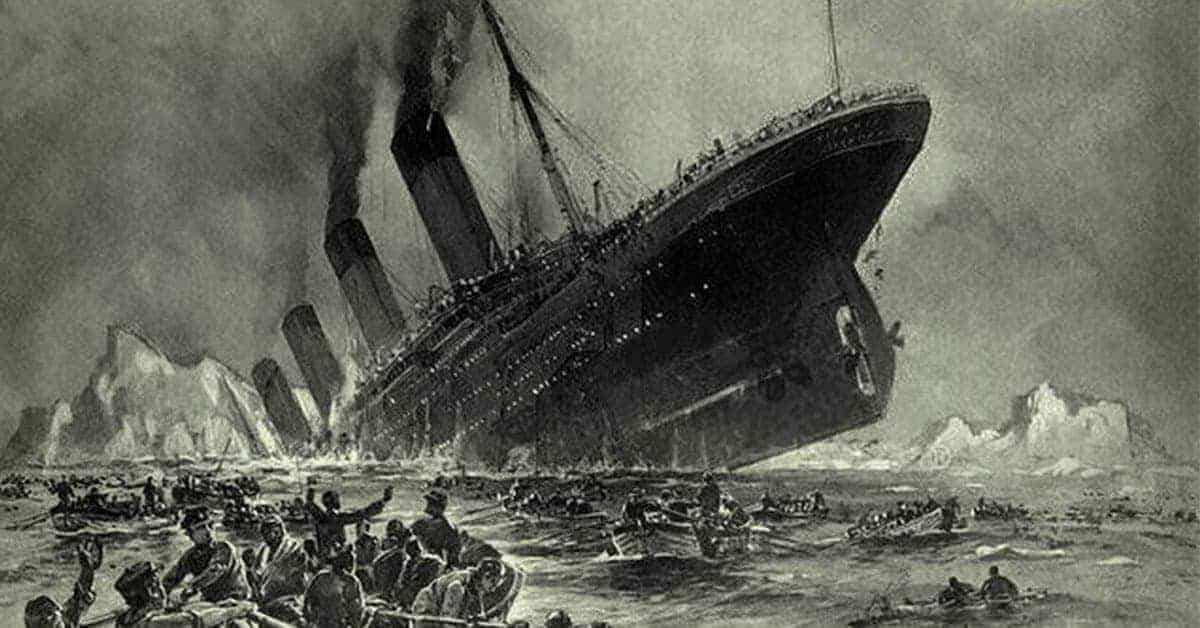The sinking of the Titanic in the early hours of April 15 1912 is an event with which almost everybody is familiar, at least on a basic level. Part of the reason for Titanic’s enduring popularity is that her story contains a bit of everything. Issues of class, gender, race and religion—as visible in the ship’s class-divided blueprint as in the many stories from the sinking (“Women and children first” and “Be British, boys!” being just a couple)—provided the pigment to an overall painting of supreme arrogance and incomprehensible human tragedy. But when the Titanic plummeted to the depths of the Northern Atlantic, it took a lot of secrets with it. And despite our confidence in our knowledge about the ship and her fate, much of what we know—from the memories and personal testimony that came to surface after the disaster—is shrouded in obscurity and misconception.
Titanic was only called “unsinkable” after it sank
It’s difficult to convey just how shocking the sinking of the Titanic would have been to people at the time. In less than three hours, the largest, most luxurious (and supposedly safest) moving object ever made had sunk with horrendous loss of life. On top of that, it had done so on the ship’s maiden voyage, after a glancing collision that few had ever felt. In a way, the sheer scale of the disaster was appropriate, given the scale of the ship herself; even the name Titanic being a conceited allusion to size.

But, ironically, the name would have also called to mind the titan Prometheus, who had stolen the secret fire from Zeus and was punished by being chained to a rock for eternity. And both the Titanic and Prometheus shared this common theme: they had tried to go beyond the limits of what was possible but ultimately came up short. This explains, in part, why in retrospect such a big deal was made of the Titanic being “unsinkable”: her ultimate fallibility fit perfectly into a narrative of human arrogance and overreaching.
The Titanic marked the pinnacle of the Age of Progress. And, when it came to technological developments, examples were everywhere. In 1896 Guglielmo Marconi introduced London to the magic marvels of wireless communication. In 1901 Ransom Olds began selling the first mass-produced, affordable automobiles from his factory in Lansing, Michigan. In 1909, 120,000 Edwardians witnessed the spectacle of Louis Blériot flying from Calais to Dover. But while there were some who saw a splendid angel of progress, others saw only a modern-day Icarus.
With the Age of Progress also came the age of secularization. Clergymen and churchgoers alike were becoming increasingly paranoid about technological advances paving over the mysterious foundations their religion was built upon. This helps explain why, before she even sailed, Titanic—with its scale and its size; its swimming pool and its gymnasium—was being reconceived in negative, biblical terms: a “Grand Babylon Hotel” (Babylon carrying connotations of extreme wealth); a floating Tower of Babel. But for all her accolades, during her life, Titanic was never described as unsinkable. The company that built her, Harland and Wolff, described her as “practically unsinkable”, but that’s as close as it ever got.
It was only retrospectively that Titanic was termed “the unsinkable ship”, the first attestation coming the day after the sinking. From there, Titanic‘s unsinkability permeated all facets of media, from newspapers, novellas, memorial services and street conversation to the length and breadth of Britain and America. And it was necessary that it did so: for it was only by making her the “unsinkable” ship, and by making her story one of hubris, that people could come to terms with the disaster and draw lessons from it. Philip Gibbs, a British author, captured the feeling best in his 1912 publication “Deathless Story” when he wrote:
“The “Titanic” could not sink.’ ‘The “Titanic” is unsinkable.’ These words were repeated again and again by men of expert knowledge, who rejoiced in the belief that science had conquered over nature and that the sea would be cheated of further sacrifice.”

